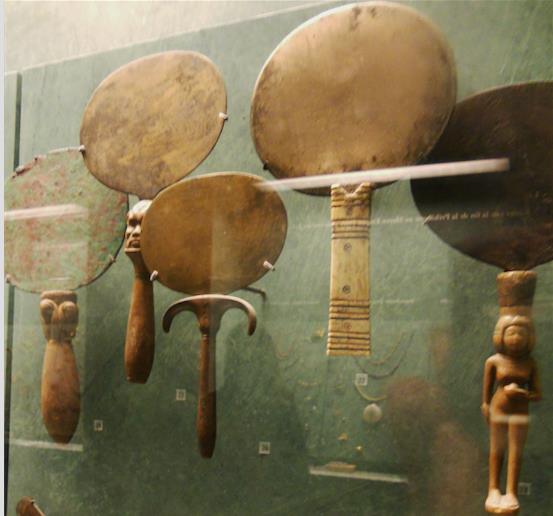A capacitor (originally known as condenser) is a passive two-terminal electrical component used to store energy electrostatically in an electric field. By contrast, batteries store energy via chemical reactions. The forms of practical capacitors vary widely, but all contain at least two electrical conductors separated by a dielectric (insulator); for example, one common construction consists of metal foils separated by a thin layer of insulating film. Capacitors are widely used as parts of electrical circuits in many common electrical devices.
When there is a potential difference (voltage) across the conductors, a static electric field develops across the dielectric, causing positive charge to collect on one plate and negative charge on the other plate. Energy is stored in the electrostatic field. An ideal capacitor is characterized by a single constant value, capacitance. This is the ratio of the electric charge (amperage) on each conductor to the potential difference (voltage) between them. The SI unit of capacitance is the farad, which is equal to one coulomb per volt.
The capacitance is greatest when there is a narrow separation between large areas of conductor, hence capacitor conductors are often called plates, referring to an early means of construction. In practice, the dielectric between the plates passes a small amount of leakage current and also has an electric field strength limit, the breakdown voltage. The conductors and leads introduce an undesired inductance and resistance.
Capacitors are widely used in electronic circuits for blocking direct current while allowing alternating current to pass. In filter networks, they smooth the output of power supplies. In resonant circuits they tune radios to particular frequencies. In electric power transmission systems they stabilize voltage and power (amperage) flow. Wikipedia, Capacitor
Capacitors and Inductors - Mirror Twins
Capacitors oppose changes in voltage.
Capacitors store potential energy - energy due to position.
Time constant for capacitor and resistor is CR.
Inductors oppose changes in current.
Inductors store kinetic energy - energy due to motion.
Time constant for inductor and resistor is L/R.
The inductor current increases over time while the capacitor current decreases over time.
The inductor voltage decreases over time while the capacitor voltage increases over time.

"I purchased an electrical device from an electrical supply store called a Proof Plane, It is a metal disk with a non-conducting plastic handle. .... By holding the device by the plastic handle, and touching the metal disk to the electronic equipment excess static electricity will jump to the metal disk. The disk then becomes portable and can be moved to a different location. The accumulated static electricity can be discharged at will by touching the metal disk to anything grounded.
The unique thing about the Egyptian metal disk then becomes a capacitor, capable of capturing and holding an electrical charge that can only be released by touching something that is grounded to the earth. The ancient Egyptians had disks that ranged in size from 1 to 12 inches in diameter."
http://www.electricancientegyptians.com/

A CAPACITOR is a tiny charge-storage device that holds electric energy on two separated conductive plates, and its behavior is ruled by clear physical laws.
What this image shows
• The graphic illustrates a basic capacitor: two metal plates (or foils) separated by an insulating layer called the dielectric, such as air, paper, plastic, or ceramic.
• Common cylindrical capacitors roll these plates and dielectric into a compact container with terminals at the ends, exactly like the drawing in your image.
The key equation Q = CV
A capacitor is a tiny charge-storage device that holds electric energy on two separated conductive plates, and its behavior is ruled by clear physical laws, not “magic electronics.”
What this image shows
- The graphic illustrates a basic capacitor: two metal plates (or foils) separated by an insulating layer called the dielectric, such as air, paper, plastic, or ceramic.
- Common cylindrical capacitors roll these plates and dielectric into a compact container with terminals at the ends, exactly like the drawing in your image.
The key equation Q = CV
- The charge Q stored on a capacitor grows in direct proportion to the voltage V across it, with the proportionality constant being the capacitance C. Q = CV
- Rearranging gives
C = QV, meaning capacitance tells how much charge the device can store per volt and is measured in farads (F).
What controls capacitance
- For a parallel‑plate style capacitor, capacitance increases with plate area and dielectric constant and decreases as the distance between plates grows.
- In formula form, C Ad,where A is plate area, d is separation, and is the permittivity of the dielectric material.
Series and parallel connections
- Connecting capacitors in series raises the overall voltage rating but reduces total capacitance, which always becomes less than any individual capacitor in that string.
- Connecting capacitors in parallel keeps the same voltage across each unit but adds their capacitances together, producing a larger effective capacitance for energy storage or filtering.
Real‑world impact
- From camera flashes to power‑supply filters and resonant Tesla‑coil circuits, capacitors let engineers shape, store, and release bursts of electrical energy with precise timing.
- Understanding these simple relationships—geometry, materials, and Q = CV—turns that little symbol on a circuit diagram into a powerful, predictable energy tool.
See Also
Battery
Capacity
Inductor
Leyden Jar
Spark
Testatika
voltaic pile
Wimshurst Machine
